Six places to visit in Hamedan
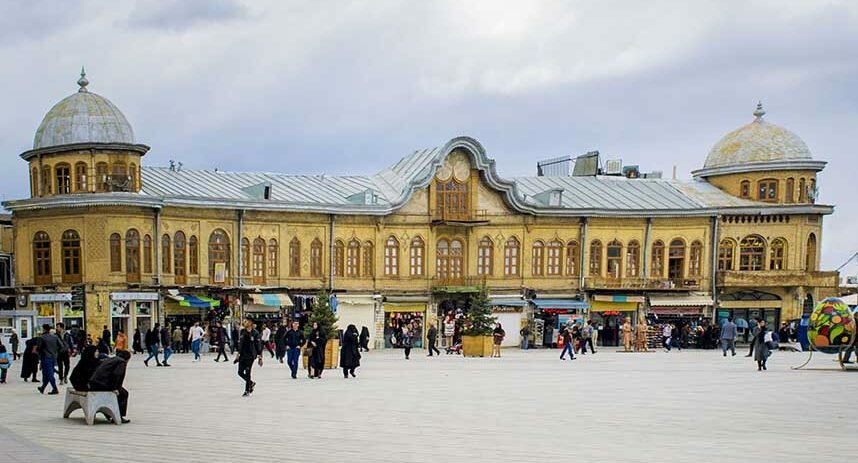
TEHRAN – The west central Iranian city of Hamedan, never falls short of offering cultural heritage sites to its visitors. Scenic natural landscapes, traditional restaurants, public gardens and colorful outdoor markets and more importantly, its hospitable people make for an unexpected slice of the city.
Known in classical times as Ecbatana, Hamedan was one of the ancient world’s greatest cities. Pitifully little remains from antiquity, but significant parts of the city center are given over to excavations, and there’s a scattering of historical curiosities.
Sprawling on a high plain, Hamedan is graciously cool in August but snow prone and freezing from December to March. In summer the air is often hazy, but on a rare, clear spring day there are impressive glimpses of snow-capped Alvand Kuh (3580m), sitting aloof above the ragged neocolonial cupolas of Imam Khomeini Sq.
Here are a select of travel attractions in the city:
Ganjnameh
Prehistoric rock carvings of Ganjnameh is a can’t-miss destination when you are traveling to Hamedan.
Literally meaning “Treasure Epistle”, Ganjnameh features sets of cuneiform inscriptions written in three languages of ancient Persian, Elamite, and Babylonian.

Dating back to the age of Achaemenid Kings Darius I (521-485 BC) and Xerxes I (485-65 BC), the inscriptions were first studied in detail by the French painter and archaeologist Eugene Flandin, who was accompanied by Pascal Coste.
The right inscription, belonging to Xerxes I, reads: “The Great God [is] Ahuramazda, greatest of all the gods, who created the earth and the sky and the people; who made Xerxes king, and outstanding king as outstanding ruler among innumerable rulers; I [am] the great king Xerxes, king of kings, king of lands with numerous inhabitants, king of this vast kingdom with far-away territories, son of the Achaemenid monarch Darius.”
An adjacent 9-meter-high waterfall becomes a popular ice-climbing spot in wintertime. In contrast, Alvand summit can be reached as a day trip in summer. The relaxed ambiance of the site, which is located just a short drive from the city, also opens up an opportunity for hiking on the side of Mount Alvand.
Hegmataneh Hill
The Hegmataneh Hill, also called Tepe Hegmataneh (thought to correspond to the ancient citadel of Ecbatana), has a circumference of 1.4 kilometers with an area of about 40 hectares.
The view of distant mountains from the top of this low, open hill is pleasantly rewarding, especially in the late afternoon, but it’s what lies below that excites archaeologists: an ancient Median and Achaemenid city.
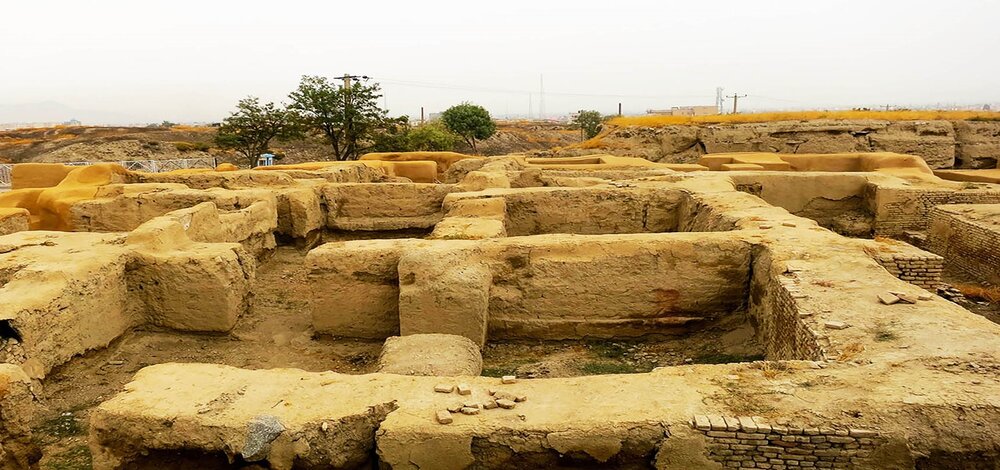
Small sections have been excavated over the last century, most extensively in the 1990s. There’s a smart museum nearby, as well as two Armenian churches, now part of Hamadan University.
Ecbatana was first excavated in 1913 by the French Assyriologist Charles Fossey. Excavations have been limited due to the modern town covering most of the ancient site. In 2006, excavations in a limited area of Hagmataneh Hill failed to discover anything older than the Parthian period (247 BC – 224 CE), but this does not rule out older archaeological layers existing elsewhere within the vast site.
Masjed-e Jameh
One of the oldest mosques in Hamedan, the Masjed-e Jameh is located near Imam Khomeini Sq. and to the west of Ekbatan Avenue. A vaulted passage of a historical bazaar leads into the courtyard of the large Qajar-era mosque.
The mosque is rectangular in shape, and formerly had four porches of which three have been remained. This structure comprises of two areas for nocturnal prayers, a brick dome and a large and pleasant court-yard with a huge pool in the center.

The disused south iwan (entrance) leads into a hall over which there’s an impressively large brick dome. The north iwan is lavished with patterned blue tile work that continues on four of the mosque’s six minarets. Some areas are restricted to men only.
Gonbadeh Alavian
The centuries-old Gonbadeh Alavian (Alavian Dome) is regarded as an outstanding example of Persian-Islamic architecture. However, its 12th-century green dome, immortalized by a reference to it in the poet Khaqani (c. 1121 – 1190)’s work, has long since been removed, but its brick tower remains famous for the whirling floral stucco added in the Ilkhanid Mongol era; this ornamentation is described by an enraptured Robert Byron in Road to Oxiana.
In its small cellar, there are tombs of two elders of Alavian family. The interior area is formed of six rooms with arches. Cube-shaved graves covered with turquoise bricks are in the center.
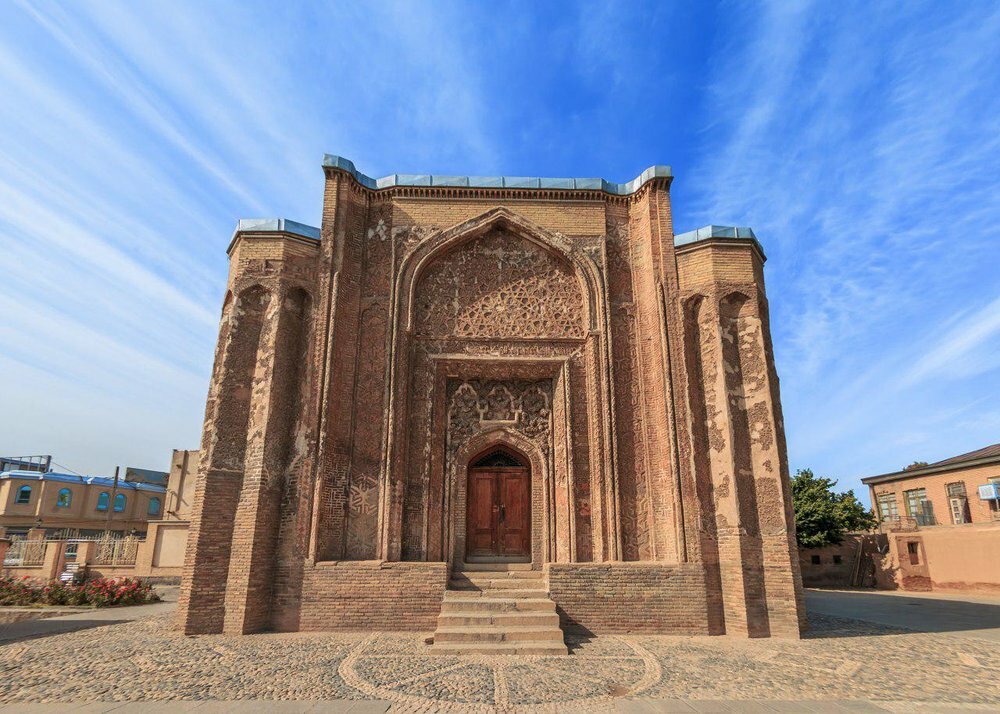
A rectangular plaque with stucco honeycomb patterns and flower motifs is hanged above the entrance of the structure. The outer frame of this plaque bears stucco reliefs of Quranic inscriptions in the Kufic calligraphy hand.
Bu-Ali Sina Mausoleum
The iconic 1952 Bu-Ali Sina (Avicenna) Mausoleum dominates his namesake square and resembles a concrete crayon pointing to the heavens. It was loosely modelled on Qabus’ 1000-year-old tower in Gonbad-e Kavus, which is a UNESCO World Heritage.
There is a single-room museum of Avicenna memorabilia, his tombstone, a small library and a display on medicinal herbs.
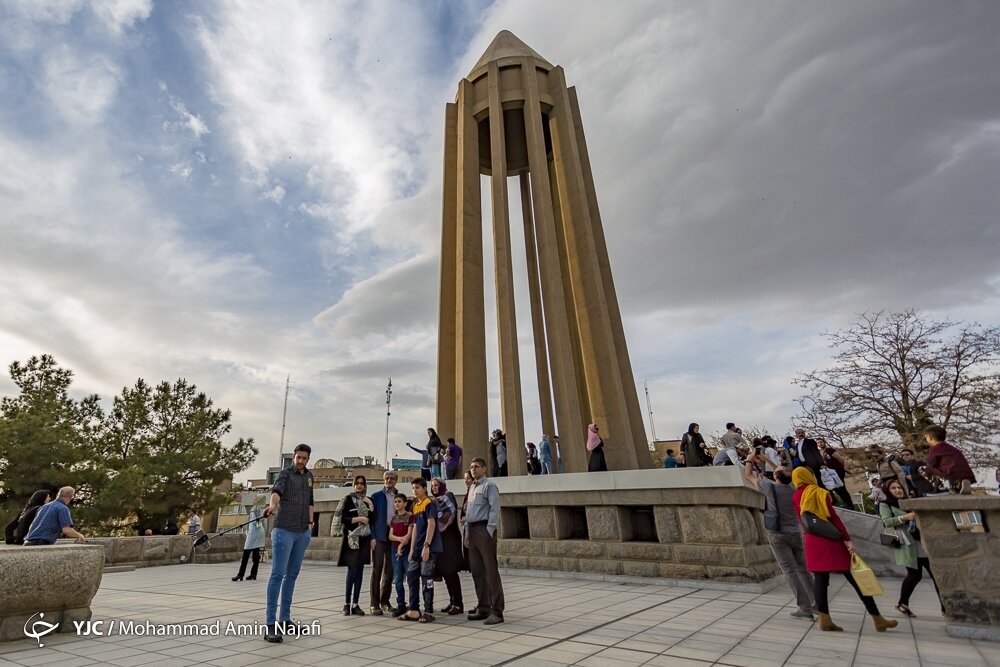
Avicenna (born 980, near Bukhara, Iran [now in Uzbekistan]—died 1037, Hamadan, Iran), was a Muslim physician, the most famous and influential of the philosopher-scientists of the medieval Islamic world. He was particularly noted for his contributions in the fields of Aristotelian philosophy and medicine. He composed the Kitab al-shifa (Book of the Cure), a vast philosophical and scientific encyclopedia, and Al-Qanun fi al-tibb (The Canon of Medicine), which is among the most famous books in the history of medicine.
Ali Sadr Cave
The scenic Ali Sadr Cave is a gigantic water-filled cavern wieldy believed to date from Jurassic era. Entrance to the lengthy cave is situated some 70km north of Hamadan.
The cave embraces a huge matrix of sunless channels, ponds, grottoes and water passages which are stretched along with imposing rock formations and stalactite-covered tops in a span of several kilometers.
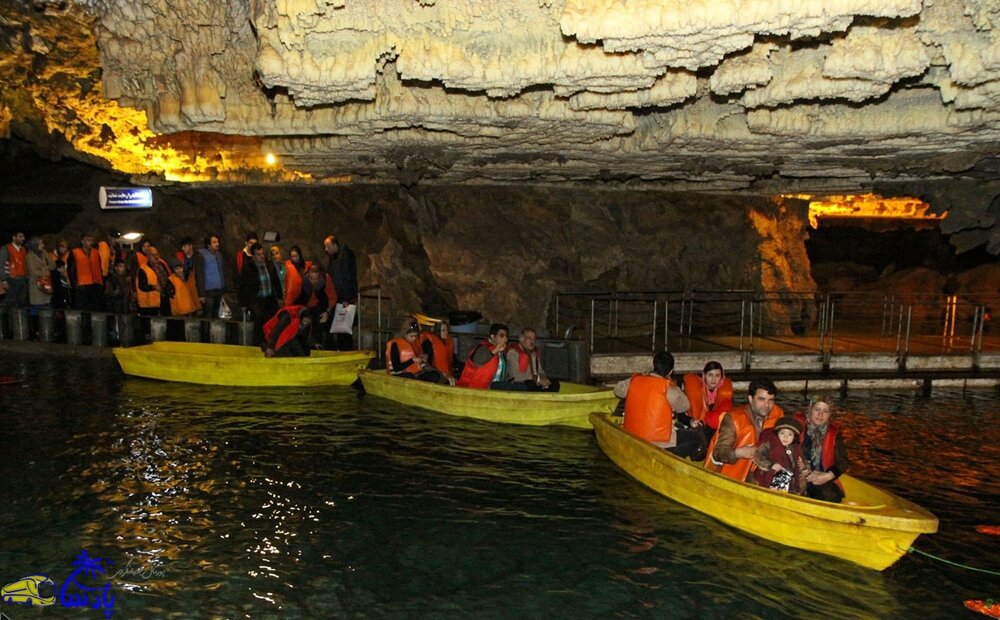
Sightseeing there is connected with traversing in well-lit labyrinths of water ways via paddle boats, walking on subterranean islets, as well as observing rock carvings of hunting scenes, artifacts, paintings and vessels which are associated with prehistorical troglodytes.
Some tour operators and tourism marketers say that a standard tour proceeds visitors some 2,000 meters inside the cave, over 1,400 of which is covered by boats that makes it one of the longest underground boat trips in the world.
The cave can be reached after some one hour of riding from Hamadan through the countryside. There are usually shuttles and taxis as well.
A capital of Asian tourism
Last November, Hamedan played host to the 40th United Nations World Tourism Organization (UNWTO) Affiliate Members Plenary Session, attended by tens of international representatives, scholars and academia.
Addressing the session, Zurab Pololikashvili, the UNWTO secretary general, said “We are willing to introduce Iran to the world as a safe and peaceful destination… We are here to help Iran become more powerful, and as a result, to make the World Tourism Organization more powerful.”
According to the UNWTO website, the seminar addresses the role of innovation and technology in the development of cultural tourism and in enhancing destinations’ competitiveness and attractiveness.
Hamedan was taken on appearance of the “capital of Asian tourism in 2018”, a privilege, which was approved in the second ACD Tourism Ministers Meeting held in Cambodia, June 2017.
AFM/MQ/MG
Leave a Comment